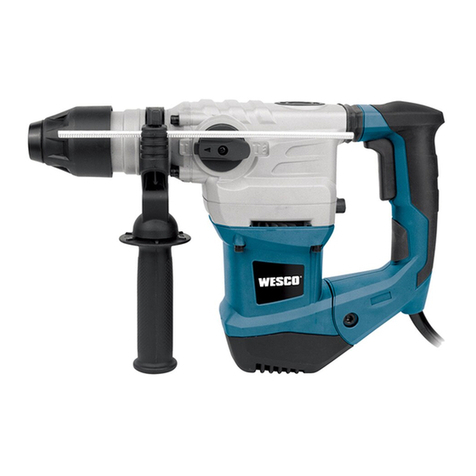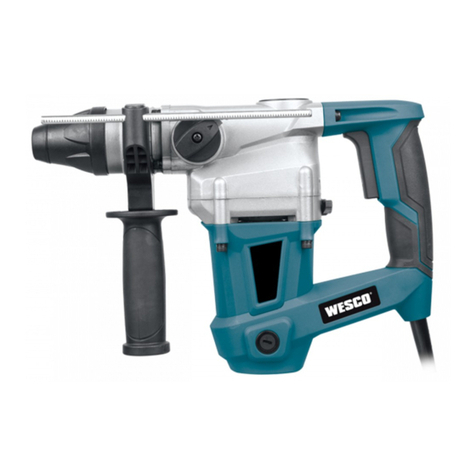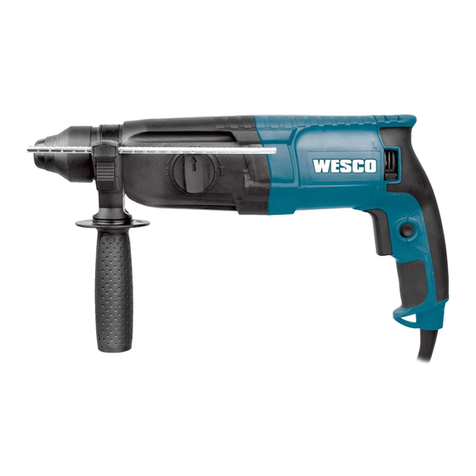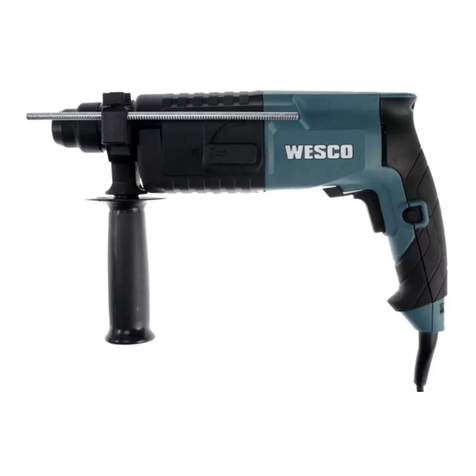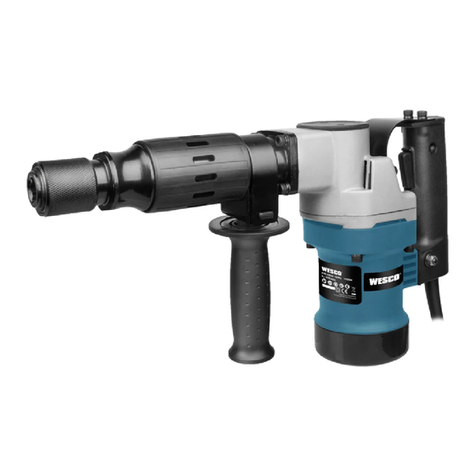
7
AVISOS GERAIS
DE SEGURANÇA
DE FERRAMENTAS
ELÉTRICAS
ATENÇÃO! Leia atentamente as
seguintes instruções. A não observância
destas instruções pode causar choque elétrico, incêndio e/
ou lesões graves.
Guarde estas instruções para referência
futura.
Os termos “ferramenta eléctrica” utilizados em todos os
avisos constantes destas instruções referem-se à sua
ferramenta elétrica acionada por corrente elétrica (com
cabo de alimentação) ou ferramenta elétrica acionada por
bateria (sem cabo de alimentação).
1. LOCAL DE TRABALHO
a) Mantenha o local de trabalho limpo e
bem arrumado. Áreas com pouca iluminação e
desordenadas podem provocar acidentes.
b) Não utilize o aparelho em locais onde
existam líquidos, gases ou poeiras
inflamáveis e onde exista o risco de
explosão. As ferramentas elétricas produzem
faíscas que podem inflamar poeiras ou gases.
c) Mantenha as pessoas e particularmente
as crianças afastadas da ferramenta
elétrica durante o seu funcionamento.
Qualquer distração pode fazê-lo perder o controle da
ferramenta.
2. SEGURANÇA ELÉTRICA
a) O Plugue da ferramentas elétricas deve
encaixar bem na tomada de alimentação.
Nunca modifique plugues, seja de
que maneira for. Não utilize nenhuma
adaptação com ferramentas elétricas
que tenham ligação à terra. Plugues e cabos
não devem ser modificadas e tomadas de corrente
adequadas reduzem o risco de choque elétrico.
b) Evite o contato do corpo com superfícies
ligadas à terra como tubos, aquecedores,
fogões e frigoríficos. Existe um aumento do
risco de choque elétrico se o seu corpo estiver em
contato com a terra.
c) Não exponha este equipamento à chuva
ou humidade. A infiltração de água num aparelho
elétrico aumenta o risco de choque elétrico.
d) Utilize corretamente o cabo de
alimentação. Nunca utilize o cabo para
transportar, puxar ou desligar o aparelho
da tomada de corrente. Mantenha o
cabo afastado de fontes de calor, óleos,
arestas afiadas ou peças em movimento.
Cabos danificados ou modificados aumentam o risco
de choque elétrico.
e) Quando trabalhar com uma ferramenta
elétrica ao ar livre, use um cabo de
extensão adequado para utilização no
exterior. A utilização de um cabo adequado para uso
exterior reduz o risco de choque elétrico.
f) Se não puder evitar a utilização de uma
ferramenta elétrica num local húmido,
utilize uma fonte de alimentação
protegida contra corrente residual. A
utilização de um dispositivo com proteção contra
corrente residual reduz o risco de choque elétrico.
3. SEGURANÇA DE PESSOAS
a) Esteja atento, observe o que está
fazendo e seja prudente sempre que
trabalhar com uma ferramenta elétrica.
Não utilize nunca uma ferramenta
elétrica quando estiver cansado ou
sob a influência de drogas, álcool ou
medicamentos. Um momento de desatenção
quando se utiliza uma ferramenta elétrica pode causar
lesões graves.
b) Utilize equipamentos de segurança. Use
sempre óculos de proteção. Equipamentos
de segurança, tais como máscaras protetoras, sapatos
de sola antiderrapante, capacetes ou proteções
auriculares devidamente utilizados reduzem o risco de
lesões.
c) Evite o arranque acidental da ferramenta.
Certifique-se de que o interruptor está
desligado antes de ligar a ferramenta
à fonte de alimentação e/ou à bateria,
antes de pega-la ou antes de a
transportar. Se mantiver o dedo no interruptor ou
acionar o aparelho enquanto este estiver ligado podem
ocorrer acidentes.
d) Remova quaisquer chaves de ajuste
ou porcas antes de ligar a ferramenta
elétrica. Chaves, porcas ou outros objetos fixados a
peças móveis da ferramenta podem causar lesões.
e) Não exceda as suas próprias
capacidades. Mantenha sempre o corpo
em posição firme e de equilíbrio, o que lhe
permite controlar melhor a ferramenta elétrica em
situações imprevistas.






